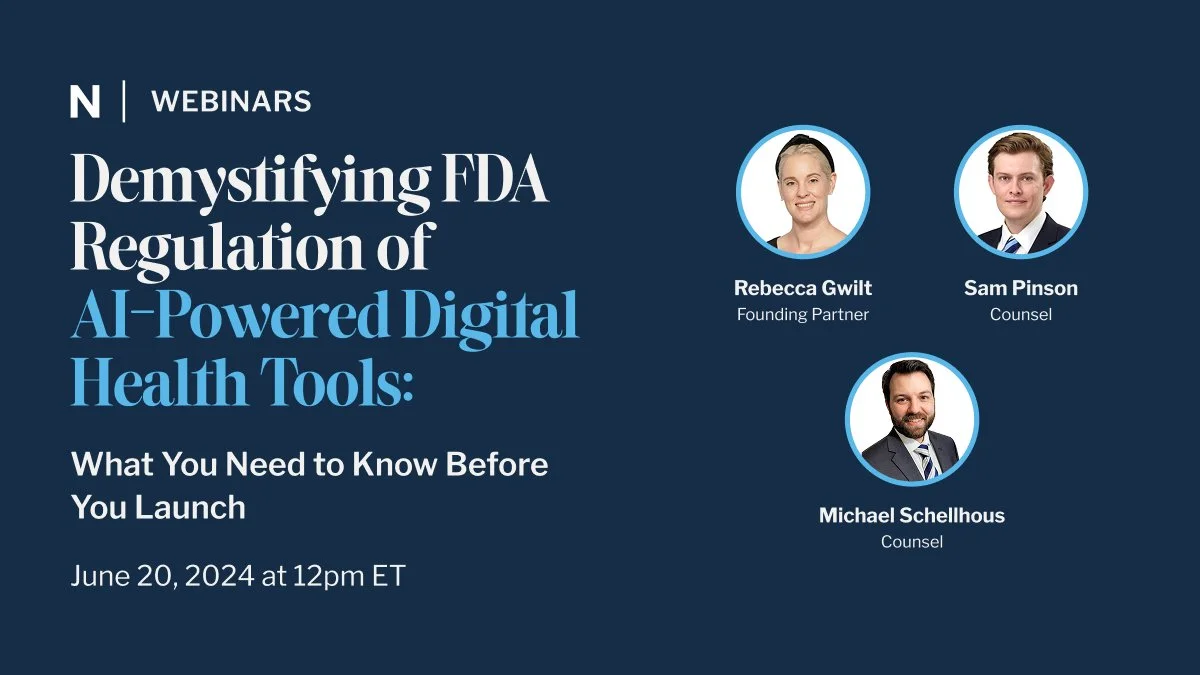
Resources:
Grow in knowledge.

Cracking the Code on AI Compliance: A Competitive Edge for Digital Health Innovators
Learn how to turn AI compliance into a strategic advantage. This webinar breaks down evolving regulations and what digital health innovators need to stay ahead.

Safeguarding Healthcare: Navigating Cybersecurity, Reproductive Privacy, & Data Access Challenges

Closing Deals with an AI Governance Plan: Top Considerations for Digital Health Companies

Breaking Down the Proposed 2025 Medicare Physician Fee Schedule: Key Takeaways for Digital Health Innovators

The 2023 Medicare Physician Fee Schedule Proposed Rule: Everything You Need to Know Now

Roe v. Wade for Healthcare Businesses: International Implications of the Reversal of Roe v. Wade

Demystifying FDA Regulation of AI-Powered Digital Health Tools: What You Need to Know Before You Launch

The Top 3 Privacy Concerns for Digital Health Innovators
Discover how Privacy compliance impacts Digital Health Startup founders and executives in terms of access to capital and securing key vendor agreements in this webinar replay. You may not have ever looked at Privacy this way before, and we encourage you to explore this perspective so you can close those critical deals without unnecessary delay.
